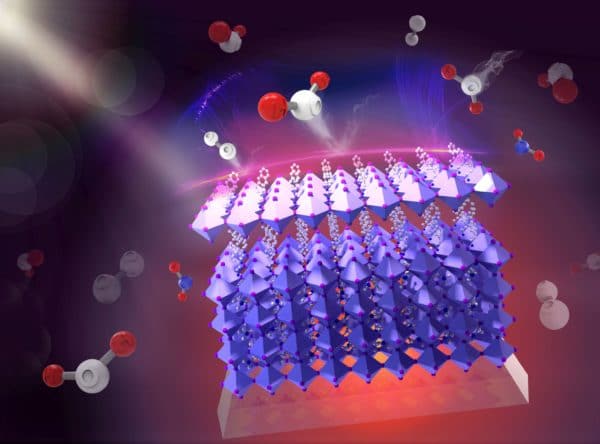Researchers have been able to push perovskite solar cell technologies to high-efficiency levels in just a few years. Though commercial applications capable of long-term high performance appear just around the corner, concerns surrounding stability remain. And though plenty of different methods have been suggested to address these concerns, new approaches are certainly welcome.
Scientists led by the U.S. National Institute of Standards and Technology present one such approach in their new paper, Unraveling the compositional heterogeneity and carrier dynamics of alkali cation doped 3D/2D perovskites with improved stability, published in Materials Advances. The group first incorporated the alkali metal rubidium into a three-dimensional perovskite film, and then grew a two-dimensional “Ruddlesden–Popper” perovskite material on top of it.
“We have conducted a very thorough, holistic study of two recent promising discoveries – rubidium doping and 2D capping – to better understand the impact these discoveries have on perovskite technologies,” said NIST researcher Christina Hacker. “We aren’t the first to look at rubidium doping or 2D capping, but we are the first to really understand what role these discoveries have in a photovoltaic device.”
Their work analyzing these materials showed several advantages over control devices produced without incorporating the two new approaches. The two-dimensional perovskite acts as a capping layer, protecting the more sensitive perovskite cell material beneath from moisture. The device also maintained 81% of its initial efficiency after 60 days exposed to ambient air at 50% relative humidity, without an encapsulant. A control sample of the 3D perovskite, meanwhile, lost 65% of its initial conversion efficiency in the same period. “The 2D cap prevents the water from degrading the crystal structure,” explained Hacker. “But it is thin enough that it does not lead to poor electrical properties.”

Image: Ming-Chun Tang, Siyuan Zhang/NIST
Doping the cell with rubidium, as well as structuring the device in 2D/3D bilayers, was shown to reduce the energy needed for electrons to move through the layers, further improving the device's performance. “We did test the solar cells using the stack and got a peak efficiency in the 20% range,” Hacker told pv magazine. “However, our goal was not to achieve record efficiencies, but rather to perform a detailed study of the impact of Rb doping and 2D/3D heterostructures to better understand the structure of these films and how this structure impacts PV performance to better guide future efforts to achieve peak efficiencies.”
New routes
While 19% performance loss would likely be too high for the cells to receive any interest outside of the research community, it’s notable that was done with no encapsulant. And the group hopes its work in 3D/2D approaches will be valuable in later work – including insights into how much rubidium. “This work provides the perovskite community with a facile strategy and fundamental understanding to rationally design a 3D/2D bi-layer architecture with significant guidelines toward high-performance perovskite photovoltaics with improved operational stability,” they conclude.
This content is protected by copyright and may not be reused. If you want to cooperate with us and would like to reuse some of our content, please contact: editors@pv-magazine.com.




By submitting this form you agree to pv magazine using your data for the purposes of publishing your comment.
Your personal data will only be disclosed or otherwise transmitted to third parties for the purposes of spam filtering or if this is necessary for technical maintenance of the website. Any other transfer to third parties will not take place unless this is justified on the basis of applicable data protection regulations or if pv magazine is legally obliged to do so.
You may revoke this consent at any time with effect for the future, in which case your personal data will be deleted immediately. Otherwise, your data will be deleted if pv magazine has processed your request or the purpose of data storage is fulfilled.
Further information on data privacy can be found in our Data Protection Policy.